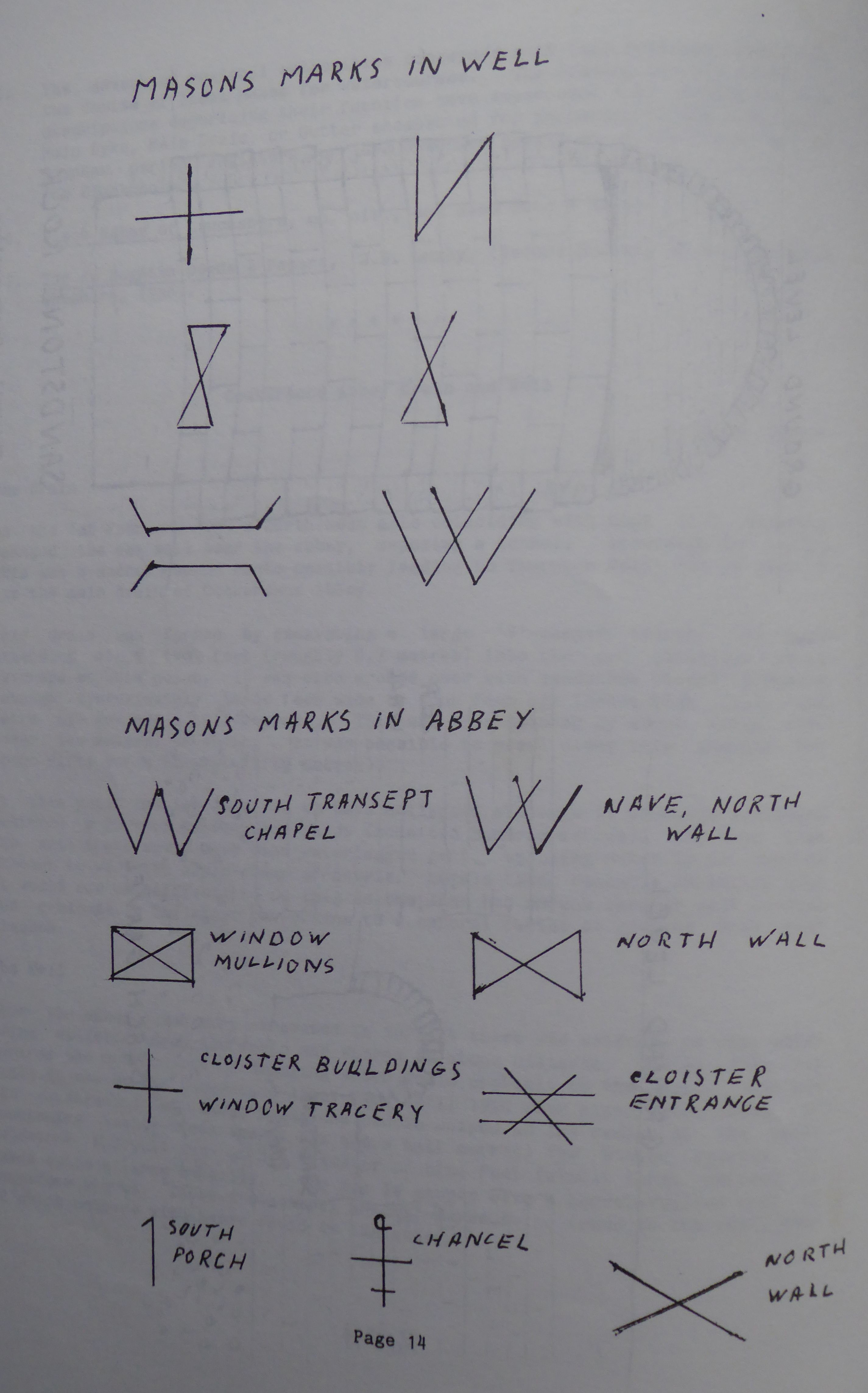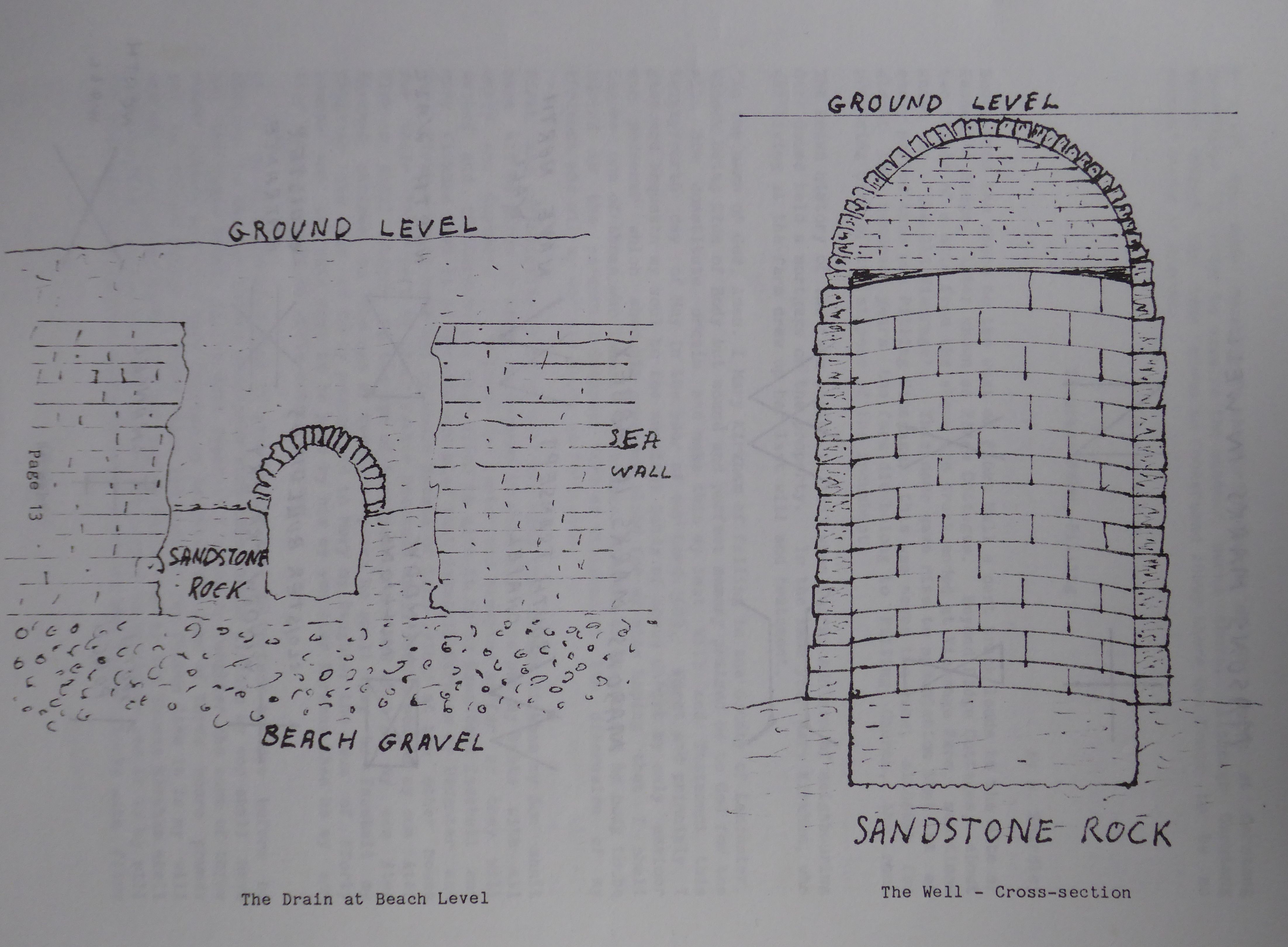Cockersand Abbey Drain and Well by D. H. Kellet
The Drain
On the 1st February 1983 a north-west gale coinciding with high tide severely damaged the sea wall near the abbey, exposing a tunnel. According to legend this was a secret escape route possibly leading to Thurnham Hall; but in fact it was the main drain of Cockersand Abbey.
This drain was formed by excavating a large 'V'-shaped trench, the base extending about two feet (roughly 0.7 metres) into the red sandstone which outcrops at this point. It was then arched over with sandstone blocks forming a passage approximately three feet wide by four feet six inches high (i.e. one metre by one and a half metres). This was then covered by about seven feet (over two metres) of earth. It was possible to crawl along this passage for about fifty yards (almost fifty metres).
At this point the top appeared to have collapsed although it probably continued eastward a further two hundred yards (some two hundred metres). At that time the soil there would have been waterlogged peat, enabling water to be drained through to keep the drain clear of debris. Levels taken recently indicated that it would now be difficult to do this as the land has shrunk through peat removal and drainage. The water now drains to a natural outlet at Jansens Pool near Glasson.
The Well
When the abbey ruins were excavated in 1923-24 there was evidence of rain water being collected from the roofs and stored in stone cisterns, but in long dry periods the only source of drinking water would probably be the well. This was still in use by the Cockersand Abbey Farm until 1950 when piped water came. It was constructed of large sandstone blocks shaped to the radius of the well. Descending twenty feet (about six and a half metres) the bottom reaches the sandstone bedrock and with a diameter of nine feet (almost three metres) it makes quite a large capacity. The top is capped with a barrel-vaulted roof of sandstone blocks. There are several masons' marks to be found in the well, some
of which compare with those found in the abbey.
A visit was made recently to the Parish Church of St. Helen at Garstang Churchtown in order to examine the masons' marks there. Although Garstang Parish Church had been given to Cockersand Abbey there was found to be no masons' marks in common.


